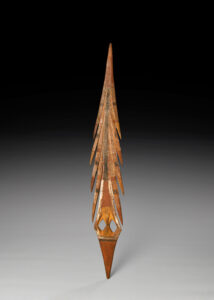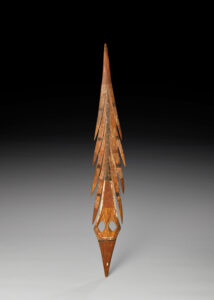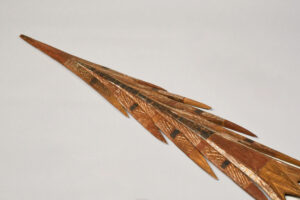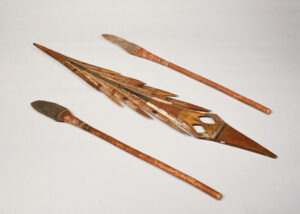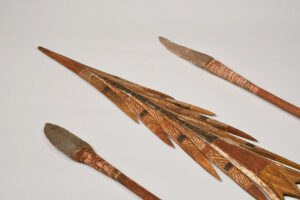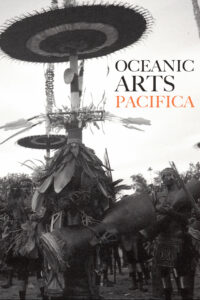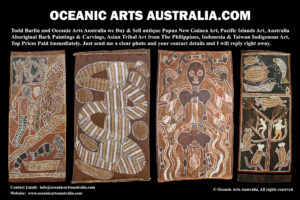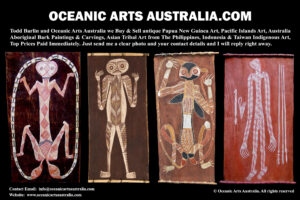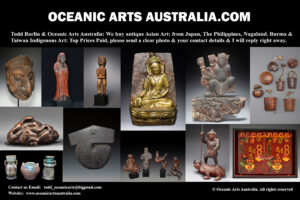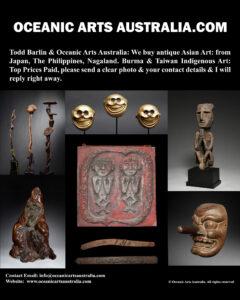A Superb Old Australian Aboriginal Tiwi Dance Spear Melville Island Northern Territory Australia
| Collection No. | TB-4016 |
|---|---|
| Size | 98.5cm |
A Superb Old Australian Aboriginal Tiwi Dance Spear Melville Island Northern Territory Australia & Two Old Arnhem Land Hafted Stone Spears
This very beautifully carved & ochre painted Tiwi Dance Spear is used for Pukamani Ceremonies
According to the Tiwi & Indigenous Art Curator Judith Ryan ;
” The original inhabitants of Melville and Bathurst Islands, the Tiwi, have been separated from mainland Aboriginal peoples and from murrintawi (white people) for much of their history.
Evidence of Tiwi ingenuity, brought about in part by their geographical position, is found in their language, customary ceremonies, material culture, kinship system. The two principal cultural events for the Tiwi are the pukumani (mourning) and kulama (coming of age) ceremonies, both of which are unrestricted in relation to age and gender.
Tiwi art is intimately connected with song and dance and with jilamara, the idiosyncratic body painting designs with which performers celebrate kulama and conceal their identity from mapurtiti (spirits of the deceased) for pukumani ceremonies. The spirit of each work resides in the Tiwi notion of individual creativity, expressed through colour & patterns of lines, and the randomness of the decoration. For Tiwi people, to sing is to dance is to paint. A painted design on any surface has deep associations with singing and dancing and elements of Tiwi language and culture that are non-verbal “.
Provenance: The Todd Barlin Collection of New Guinea Oceanic & Australian Aboriginal Art

